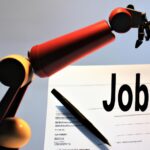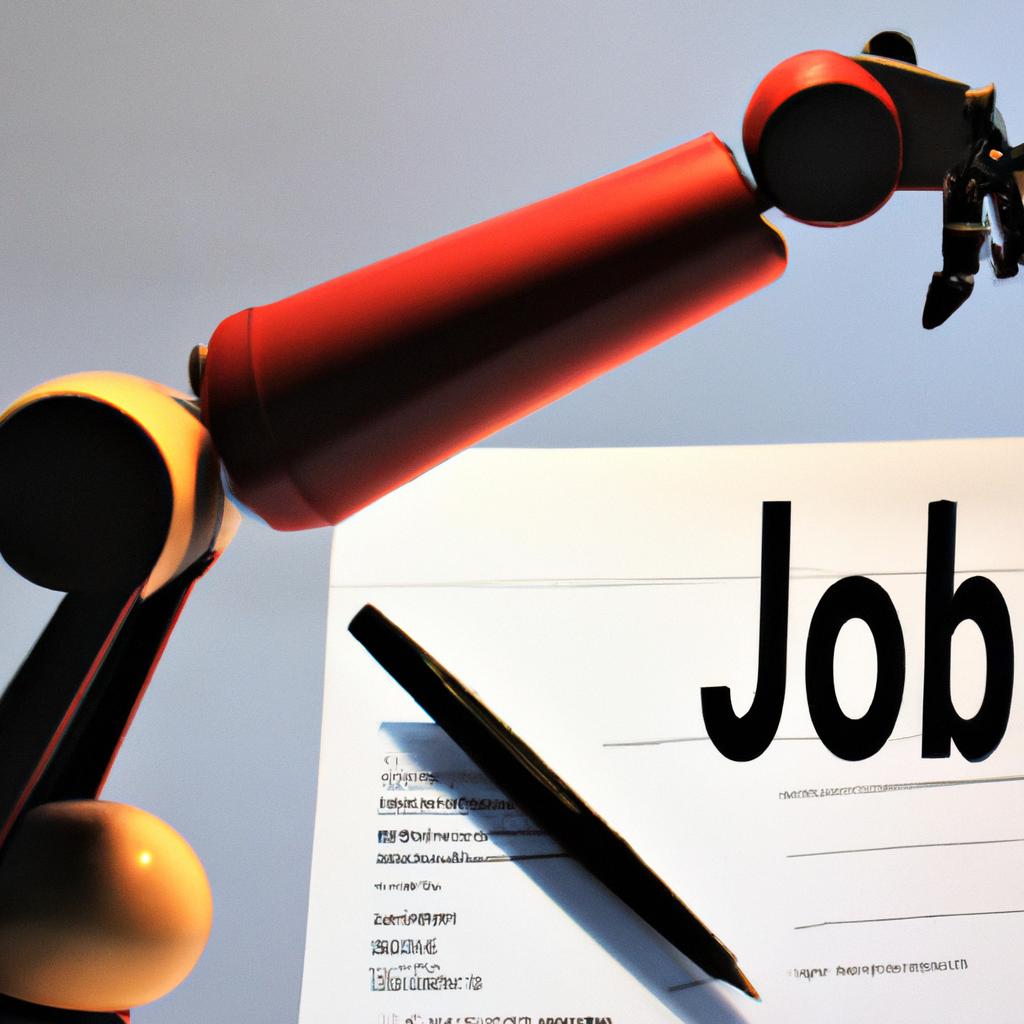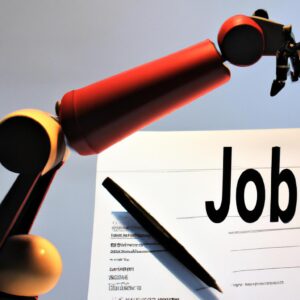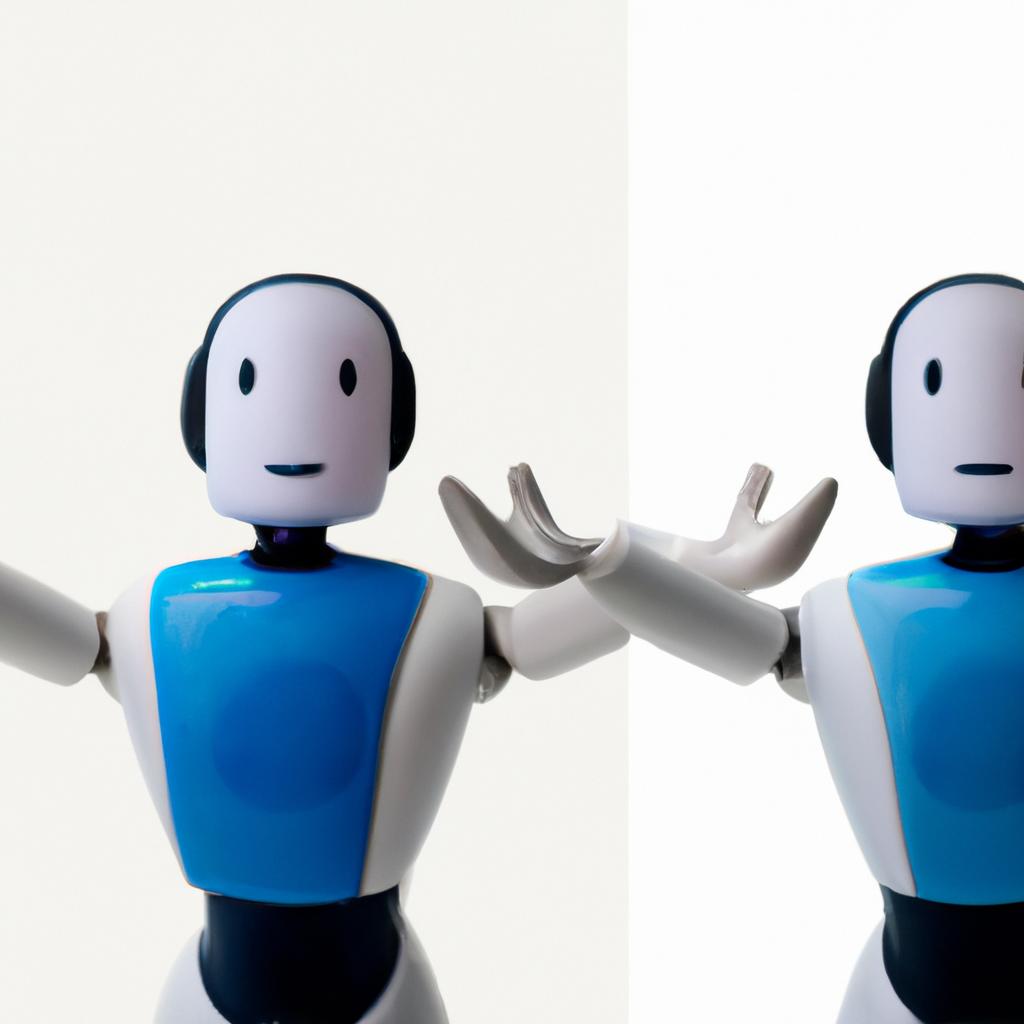Introduction to the Impact of AI on the Job Market
Artificial intelligence (AI) is a branch of computer science that deals with the development of machines capable of performing tasks similar to those done by humans. AI is being used to automate tasks in industry, which could reduce the need for human workers. This has led to concerns over the potential impact of AI on the job market and the displacement of human labor.
In this guide, we will explore the potential impacts of AI on the job market. We will consider the synergy between AI and other related technologies, and how this has shaped the current trend of automation and job losses. We will also analyze the history of AI and its historical relevance. Finally, we will look at the perspectives of both sides of the fence, and how technology might alter the employment landscape.
By drawing from the facts available, and critically examining these arguments, this guide will help to shed light on the potential impacts of AI on the job market.
The Evolution of AI in the Professional Space
AI (artificial intelligence) is an ever-evolving technology that has been widely used in professional circles for decades. It has become increasingly valuable in various applications, including automation, analytics, and more. But how did it get to where it is now?
The history of AI goes back centuries, as thinkers pondered the possibilities of technology being able to replicate human thought. However, it wasn’t until the 1940s that AI truly began to take shape. During this time, American mathematician John McCarthy coined the term “artificial intelligence” and began to develop early software programs such as computers and gaming algorithms.
In the 1960s, AI was further developed and applied to space exploration. This era marked the beginning of “expert systems,” which are programs designed to extract knowledge from experts in a particular field and apply them to different tasks. This marked a significant improvement in AI’s sophistication and ability to understand complex matters.
As the decades passed, AI continued to become more and more complex. In the 1990s, neural networks were introduced, allowing machines to learn much quicker and with greater accuracy. With the introduction of deep learning in the 2000s, AI showed an even greater capacity for understanding and learning, making it invaluable in many areas.
Today, AI technologies are used in a wide range of industries, such as healthcare, finance, manufacturing, and more. The synergy between AI and other related technologies has created a powerful platform, enabling machines to process vast amounts of data in a fraction of the time it would take a human.
Economic Evaluation of AI Impact on Job Market
As technology advances, the potential impact of AI on the job market has become a prevalent point of discussion. To analyze the current implications, it is important to define and discuss what automated systems can do and how they might affect employment. This section will cover what automation and artificial intelligence mean, the industrial revolution’s influence, and the potential for job losses/gains.
Defining Automation and AI
Automation describes any process that uses a machine or computer program to run without intervention, often to complete a task faster than a human. AI (Artificial Intelligence) takes things a step further by enabling machines to perform functions or tasks that require intelligence, such as pattern recognition and decision-making. As AI continues to develop, its capabilities and the examples of its application are becoming more widespread.
The Industrial Revolution & Our Perspective on Technology
The industrial revolution jumpstarted our society’s fascination with technology. During this period, mechanization allowed us to increase production and efficiency in hitherto unimaginable ways. This shift in the way we perceived technology led to questions about whether AI can similarly lead to increased productivity and lower labor costs, while having a minimal effect on the overall job market.
Potential Job Losses/Gains
There is a growing fear that AI could replace certain jobs or even entire industries. Some of these worries are justified due to the number of jobs already lost to automation, such as manufacturing roles, administrative duties, travel booking, and other customer service roles. At the same time, the advancement of AI has created opportunities for new jobs, such as those in data analysis, research, and development. As AI progresses, it will also assist in creating jobs that didn’t exist before.
Perspectives of The Future
The future of AI technology and its potential impact on the job market is a hot topic. Many experts in the field are divided on whether it will be beneficial or detrimental to humanity. On one hand, some argue that AI can open up a world of possibilities with increased automation and reduced labor costs. On the other hand, others worry that AI could lead to a loss of jobs and instability in the labor market.
When considering potential futures, it’s important to look at the internet-based or remote jobs and whether they could be a viable option for those seeking employment. People who work from home could benefit from AI technology as tasks such as customer service and data entry become more automated. There is also potential for new industries to emerge such as AI development, data analysis, and virtual assistance.
However, there are also risks associated with this kind of technology. Automation could put people out of work, and skillsets could quickly become obsolete. Additionally, the cost of technology may be too great for individuals or companies to utilize, and the inequality gap between those who can afford it and those who cannot could widen.
Automation vs Human Presence
As technologies advance, so too do their use in the workplace. Automated processes can be incredibly advantageous for businesses, reducing labor costs and increasing efficiency. But how does this affect human workers? Is it beneficial to automate certain processes, or will this eventually lead to job loss? Let’s take a look at the possible cost/benefit analysis of AI in the workforce.
One important factor to consider when it comes to automation is the amount of time saved by machines. Automating certain tasks can make mundane jobs or ones with frequent repetition much easier on employees, not to mention employers. Machines that are capable of completing certain tasks more efficiently than humans could potentially save entire companies time and money.
On the other hand, AI may lead to the eventual displacement of human workers. Companies may choose to invest in automated systems and robots to complete what humans have done in the past. This could mean fewer jobs unfortunately, as fewer people are needed to complete certain tasks.
Though there are both benefits and drawbacks to the use of AI in the workplace, it’s important that businesses weigh these carefully before investing in automated systems. Automation can save money in the long run, but it should not come at the cost of human workers.
Evaluation of AI Impact on Employment
AI technology has advanced rapidly within the past decade, with its accessibility and applications growing in both the consumer and professional realm. In fact, many industries are already looking to AI as a solution to many tasks, from customer service and marketing to healthcare and workforce management. However, this also raises concerns about the potential impact of AI on the job market.
In order to evaluate the potential impact of AI, it is important to consider how current employment trends are likely to be affected by automation. Reports suggest that up to 47% of the U.S. workforce will be replaced by robots in the near future, with traditionally labor-intensive sectors such as manufacturing and retail being particularly vulnerable. As a result, many have raised questions regarding the necessity for labor markets to accommodate for the changes in technology.
At the same time, AI could also lead to an increase in new jobs, such as those related to coding and programming. Furthermore, it could also offer a platform for future entrepreneurs, allowing them to access a larger pool of customers and new opportunities to monetize their ideas. Consequently, there is still debate over whether this shift will result in more jobs, or if it will lead to job losses.
Ultimately, although AI technology can bring about significant advantages, further discussion is needed in order to evaluate the true potential impact of AI on the job market.
The Impact of AI on Human Landscapes
As technology continues to advance, so too does the potential for it to shape and transform our world. AI stands apart from other technological advancements in its ability to replicate some human intelligence, posing the question of how it will affect the way we interact and do business. AI has the potential to alter our human landscapes in many ways.
To start, AI could impact the way humans interact with each other, potentially leading to a general decrease in face-to-face interactions as more tasks that were traditionally done by humans become automated. Additionally, AI also has the potential to create new jobs in areas such as AI development and data science, as businesses and organizations look to leverage the power of AI to better serve their customers or target markets. Finally, AI could also have an impact on the job market itself, as more positions become automated, and new roles within AI-related fields are created.
The development of AI also has the potential to provide humans with more leisure time. As machines take over the more mundane tasks, people may have more time to devote to leisure activities and creative pursuits. At the same time, AI could potentially lead to more widespread unemployment if businesses choose to replace people with robots and other technologies that can carry out the same task at a faster rate. How both scenarios play out are largely unknown, but one thing is certain: AI is poised to more drastically redefine our world in the coming years.
Comparing Current Jobs to Potential Jobs
Current Jobs: The job market as we know it is composed of many traditional roles that have remained largely unchanged despite the growing role of AI and automated processes in the global economy. Jobs such as customer service agents, factory workers, administrative staff, delivery drivers, and retail employees make up the majority of employment opportunities in a wide range of industries.
Potential Jobs: With the development of AI-based technologies, new roles and opportunities are emerging in many sectors. There is an increasing demand for professionals, such as engineers, data scientists, and software developers, to create and implement these new automation systems. Furthermore, AI could also lead to the formation of jobs within fields such as professional gaming and virtual reality.
Alternative Mentalities Surrounding the Labor Force
The development of AI has raised questions about our current conception of the labor force. One major theory is the concept of a universal basic income (UBI), which would provide citizens with a guaranteed income regardless of their level of employment. This could become a viable option as automation becomes commonplace, with AI taking over many lower level jobs.
Other potential solutions include implementing shorter work hours, a job guarantee for all citizens, or focusing on enhancing education and skills training opportunities. Each of these options would provide more flexibility to the workforce and offer further economic stability.
Conclusion
The potential implications of artificial intelligence (AI) on the job market are vast and complex. As AI evolves and becomes more advanced, it will be important to recognize all of the different effects that this technology can have on the current job landscape. From increased automation to changes in labor markets, AI is set to revolutionize the way we work. It is important to not only consider the economic impacts that AI can have, but also how it might alter the way humans interact with one another. Ultimately, further research and study will be needed to determine how AI will truly shape the job market.
This guide has sought to analyze the potential implications of AI on the job market. From a historical review to an evaluation of the cost/benefit analysis of automation, there is a lot that needs to be considered when predicting the future of the labor force. The supply of jobs is likely to change as AI continues to evolve, and the current structure of the job market could be altered as new technologies come into play. With careful consideration, however, it is possible to anticipate how these changes will affect individuals and how they must adapt in order to keep up.
comments: 0











